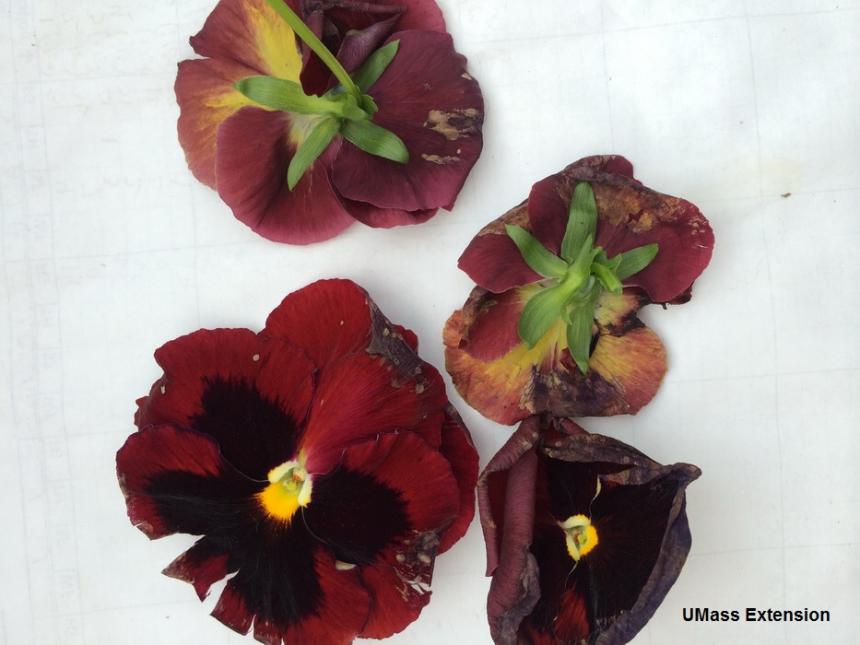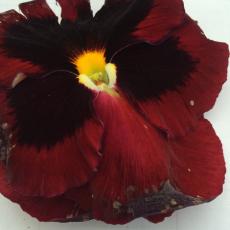Botrytis (Gray Mold) can occur on blossoms and cause a flower blight.
Botrytis blight and stem canker is caused by Botrytis cinera. This pathogen is ubiquitous in the environment, has an extremely wide host range, and prefers to attack senescent and/or injured tissue. Botrytis can be controlled by management of environmental conditions, sound cultural practices, and fungicide applications. Control weeds and remove plant debris. Space plants to allow good air circulation, reduce humidity within the canopy, and minimize leaf wetness. Improve horizontal air flow with fans. Reduce humidity by a combination of heating and venting in the evening, particularly when warm days are followed by cool nights Water in the morning if practical. Fungicides appropriate for Botrytis include thiophanate methyl & iprodione (26/36), trifloxystrobin (Compass), thiophanate-methyl (Cleary's 3336), fenhexamid (Decree), chlorothalonil (Daconil), mancozeb (Dithane, Protect DF), azoxystrobin (Heritage) and fludioxonil (Medallion). Check label for host appropriateness. Resistance to thiophanate-methyl, iprodione and fenhexamid has been reported in Botrytis populations. Always alternate fungicide applications between materials with different modes of action to prevent resistance development.
Botrytis Blight on Greenhouse Crops, UMass
Botrytis Blight on Greenhouse Crops, UConn Extension

